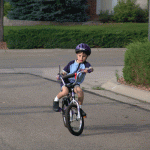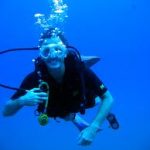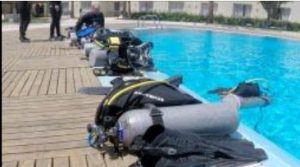“Stop teaching and allow people to learn” – PADI Course Director, PADI Platinum Course Director
Buoyancy – how did you learn buoyancy control?
Just think of any skill that you learned in the past –
Riding a bike?
Changing gear in a car?
Tying your shoelace?
Think back for a moment. Just how did you learn these skills? – Were you taught? Or did you learn?
Someone probably thinks that they “taught” you. Oh sure, they told you what to do, and showed you how to do it, but that wasn’t nearly enough was it?
Take riding a bike. Did you notice that the more that you concentrated on balance the more you wobbled? After a few practices, it got easier. Your awareness expanded and you got the “feeling” of balance.
In your car, it’s YOU that got the feeling of balancing clutch and accelerator. You learned by yourself. Practice was so important.
Of course you were grateful for the encouragement and the coaching support around you, but at the end of the day it was YOU that learned how to do these skills.
What about buoyancy control?
Now think back to when you first learned to control your buoyancy.
Your Instructor probably thinks that they “taught” you buoyancy. But that isn’t really true either is it?
The more that you concentrated on neutral buoyancy, the more that you struggled. But the more you practiced, you gradually got the “feeling” of buoyancy. You used your BCD inflator less and less, and you used your breathing more and more.
You were grateful to your Instructor for the encouragement and support, but it was YOU that learned how to control your buoyancy.
How the most successful PADI Instructors teach buoyancy control
Well, actually the best instructors don’t teach buoyancy control at all!
They spend a bit of time making sure that the new diver is nicely trimmed, they then let them discover buoyancy for themselves. It doesn’t take long!
Have you seen brand new divers enjoying a Discover Scuba Diving event? They swim happily around in mid water totally blown away by the whole experience. No-one mentions neutral buoyancy, and no one tells them about the low pressure inflator.
On an Open Water course, the most successful PADI Instructors just allow divers to swim around in confined water getting comfortable in their new surroundings. Then when they are ready, introduce some of the formal skills, like regulator recovery, it’s perfectly natural for the new diver to take out their regulator and put it back in while swimming around.
For more technical skills like partial mask flood, it’s best for some divers to stop and concentrate on the art of breathing out through the nose. However there is no reason why the new diver cannot complete this skill while balancing on fin tips and leaning forward.
Successful PADI Instructors never encourage using the bottom to stabilise student divers. Doing this definitely slows down the learning process.
If you’ve attended any one of my PADI IDCs, you’ll know that I emphasise the importance of practicing skills while being neutrally buoyant.
I love showing experienced instructors how they can improve their teaching techniques. Many come along to my IDCs for a refresher.
All of my IDC Candidates demonstrate skills and teach skills while neutrally buoyant during the Instructor Exam.



